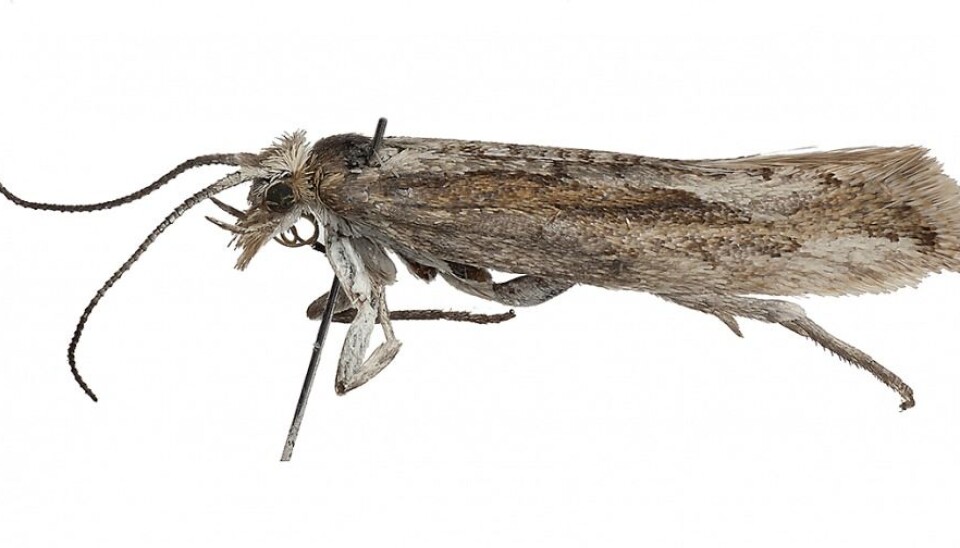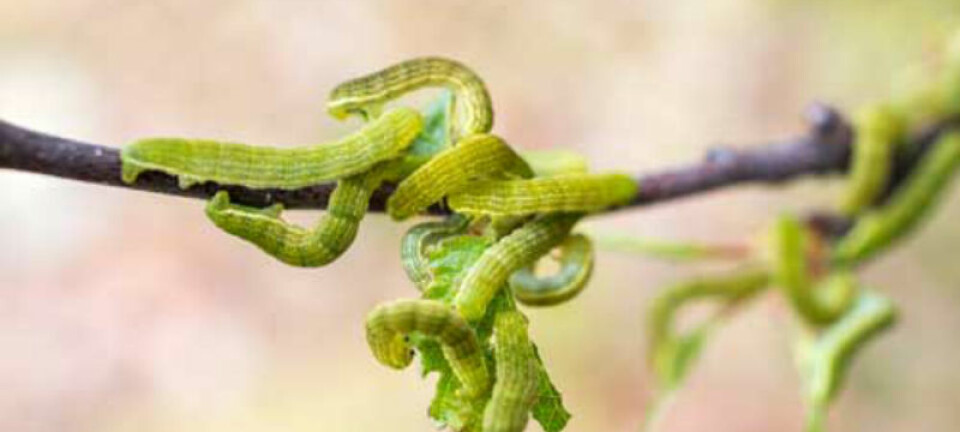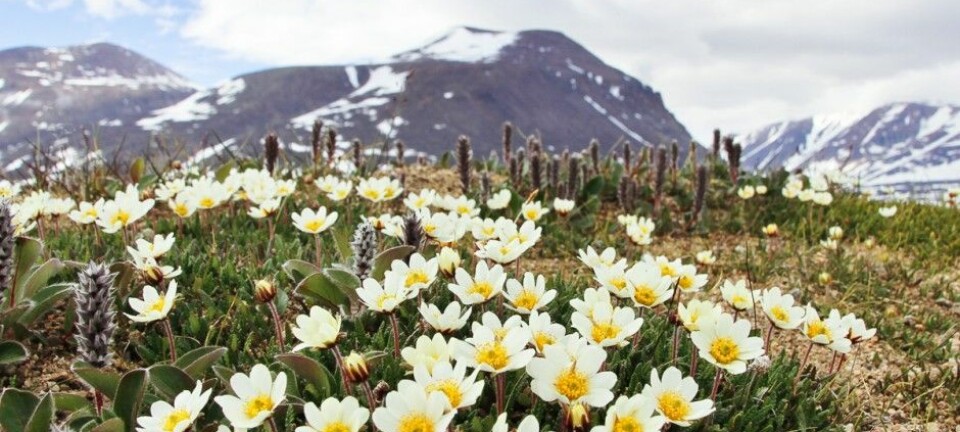
Arctic moth turns up after 140 years
Norwegian researcher found a living specimen of a small grey moth presumed gone from Svalbard. He thinks this demonstrates how poorly charted parts of Norway’s polar archipelago are.
Geir Søli and his colleagues went on an expedition to the Wijdefjord on the north coast of Spitzbergen in the summer of 2015. Several glacial valleys line the eastern shore, one of which is Ringhorndalen.
Botanists were the first to discover something special about the area.
“One of the factors is that this is a very dry area and it is relatively warm in these small side valleys as they catch a lot of solar rays,” explains Søli.
This is where the little moth turned up. Svalbard has only three registered resident insects in the order of butterflies and moths – Lepidoptera. But one of them, Plutella polaris, has not been spotted since 1873, when seven specimens were netted by a vicar with a keen interest in insects.
No doubts

Plutella polaris is tiny, just a centimetre long with a wingspan of one-and-a half centimetres. So how did Søli spot it?
“You don’t find much fluttering about on Svalbard like a butterfly. So you catch what you can and hope for something exciting. But I wasn’t sure right off that this was the right species when I caught it,” says Geir Søli.
It has a very close relative called a Diamondback moth. Every year some of these, also known as cabbage moths, are blown north with warm winds. A few end up on Svalbard but they are not categorized as a native species because they don’t survive the Svalbard winter. Plutella polaris does.
Back in Oslo at the Natural History Museum, entomologist Leif Aarvik made a closer examination of his catch.
He found that this was something other than the common Diamondback moth.
“There was no doubt about it. We had found the species that hasn't been seen since the 1870s,” says Søli.
“This was a real joy and a minor victory. Now it would suddenly be easier to argue that this is an exciting region and it is important to investigate it further.”
Little exploration
Far north in Ringhorndalen is also where botanists found two plants that were not known to grow on Svalbard. This was also remarkable, as the vegetation of Svalbard is pretty well documented and charted.
Insects have received less attention.
No entomologists have been at work at Ringhorndalen, at least not in many years. This is probably why this little moth wasn’t discovered until now,” says Søli.
“It seems to thrive up in the valley. It is good and warm and probably has a rather long season to mature in,” says Søli.
This is not the case for much of Svalbard, despite the 24/7 hours of daylight in summer months. Flies and mosquitoes have a better chance at developing by feeding on the leftovers of the previous summer season.
“Plutella polaris is a strict vegetarian. So it needs to chew away at plant material from the early spring and parts of summer in order to mature.”
Susceptible, but robust
Professor Torbjørn Ekrem at the NTNU University museum in Trondheim has also worked on Svalbard, charting insects, in particular gnats, together with Entomologist Elisabeth Stur.
The area has hardly been stampeded by biologists, so he is not surprised that a moth could be caught after living out of human sight for over a century.
“But it is really great to see a species that lived on Svalbard 145 years ago still exists.”
“Life on Svalbard is precarious and many species are especially adapted to the tough climate. Although they have to withstand strong environmental stresses in the course of a year it doesn’t mean they cannot deal with competition from more thermophilic species and tackle the higher temperatures caused by climate change,” he says.
Insect collecting vicar of the 19th century
Plutella polaris could certainly have flitted around a human being or two in the past century. But the last person to have captured one in the service of science was a vicar in 1873.
That was the year that the Reverend A. E. Eaton found seven specimens at “Wide Fjord” on Spitzbergen. These were taken back to Natural History Museum in London.
Only two of these remain. It is anybody’s guess what happened to the others.
“These are the only two individuals known of this species until we re-discovered it in 2015,” says Søli.
He thinks this find illustrates how poorly charted parts of Spitzbergen and the Svalbard Archipelago are still. One of the reasons is that it is simply so hard getting around these islands, halfway between North Norway and the North Pole.
“Much has been charted around Adventsfjorden, the town Longyearbyen and Ny-Ålesund, areas that are visited by many every year. Elsewhere, it can be rather incidental where people have gone ashore.”
The University Centre in Svalbard, UNIS, now runs annual voyages and he points out these have extended knowledge, however:
“There are still huge areas that could be described as uncharted land when it comes to insects and other creepy-crawlies,” says Søli.
He and his colleagues have identified over 40 species of insects that were not previously registered on Svalbard, and over 15 of these have not been scientifically described earlier.
Registered incorrectly
Elisabeth Stur and Torbjørn Ekrem have jointly discovered ten species that no one knew existed on Svalbard. In the geothermal springs called Jotunkildene on the north of Spitsbergen they also found a genus that had never been seen on Svalbard before.
Søli and Ekrem say the animal kingdom on Svalbard is rather well known compared to other Arctic areas but there are still places that are insufficiently charted.
Moreover, some species have been registered by mistake because scientists have had too little to go by when making comparisons.
One problem for researchers attempting to determine the species of Arctic insects is that their guidelines are often scientific descriptions of bugs from the Continent.
Now that many of the species the researchers come across can be checked by DNA analysis more easily than before they see these have been registered under the wrong names.
Stur and Ekrem are now preparing a key for determining all the midges or gnats of Svalbard. They hope this basis for references together with a reference library of DNA barcodes will make it easier for future researchers to spot prospective changes in the ecosystems in the High North.
Geir Søli has spearheaded these efforts to establish an overview of flies, mosquitoes and gnats.
He thinks it is particularly important to chart what can be found living on Svalbard today.
“Now we are at the very end of a climate regime that has been secure for several thousand years. It is starting to change. So how do we detect these changes ahead without knowing what the point of origin was? We would lack a point of reference.”
-------------------------------------
Read the Norwegian version of this article at forskning.no
Translated by: Glenn Ostling
































